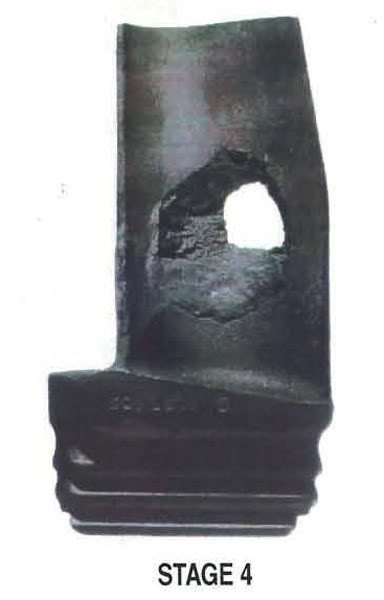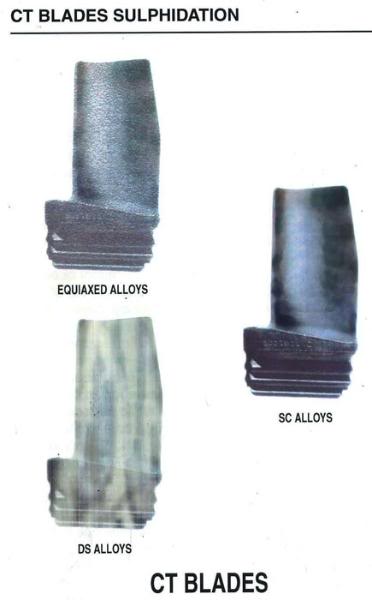 Terlepas dari pesawat terbang rendah atau tinggi, terbangnya di bush/Offshore/Onshore, atau di nun jauh atas sana , pasti selalu akan ada saja bahaya mengancam dari pada "SULPHIDATION ATTACK" atau "HOT CORROSION" yang bisa terjadi karena pengaruh kandungan sedimen udara lingkungan ditambah kerja berat mesin.
Terlepas dari pesawat terbang rendah atau tinggi, terbangnya di bush/Offshore/Onshore, atau di nun jauh atas sana , pasti selalu akan ada saja bahaya mengancam dari pada "SULPHIDATION ATTACK" atau "HOT CORROSION" yang bisa terjadi karena pengaruh kandungan sedimen udara lingkungan ditambah kerja berat mesin.
Rumusan kandungan yang menyerang itu:
- SALT, seperti biasa udara lingkungan yg mengandung uap garam (jangan lihat hanya onshore/offshore, di ketinggian tertentu juga ada).
- SULPHUR Compound, biasanya uap hasil pembakaran BBM, ditambah lagi polusi gunung, polusi pabrik,dll.
- SILICA (Airborne Dust), biasanya ini polusi dari gunung berapi yang aktif (yang terakhir ini sangat tajam, bak kertas amplas).
Jadi kombinasi SALT+SULPHUR+SILICA = SULPHIDATION ATTACK, bisa menyebabkan Rapidly/Premature "HOT CORROSION".
Lihat NICKEL ALLOY bahan dari pembuatan turbine blade yang sudah kena pengaruh "Polusi" plus "Kerja Kerasnya" , dan sudah mulai berubah warna, dan proses pembuatannya dibagi sebagai berikut:
DS = Directionally Solidified Casting
SC = Single Crystal Casting
EA = Equiaxed Alloy Casting
Lihat NICKEL ALLOY bahan dari pembuatan turbine blade yang sudah kena pengaruh "Polusi" plus "Kerja Kerasnya" , dan sudah mulai berubah warna, dan proses pembuatannya dibagi sebagai berikut:
DS = Directionally Solidified Casting
SC = Single Crystal Casting
EA = Equiaxed Alloy Casting
Secara operasional:
- turbin terendah putarannya 6000 rpm, yang tertinggi 30000 rpm
- turbin terendah panasnya 350 deg Cel, yang tertinggi 850 deg cel
Stage 1
Mild sulphidation :
- Evident slight roughness of surface and breakdown of the coating layer.
- Condition is acceptable in the field.
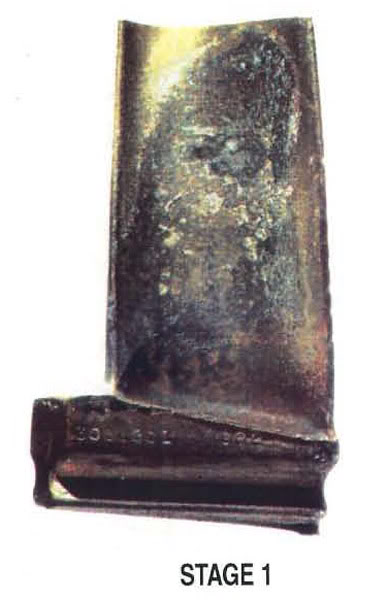
Stage 2
Medium sulphidation :
- Heavy roughness of the surface, Base material is attacked, Blade integrity still not affected.
- Condition is still acceptable in the field, with closed monitored
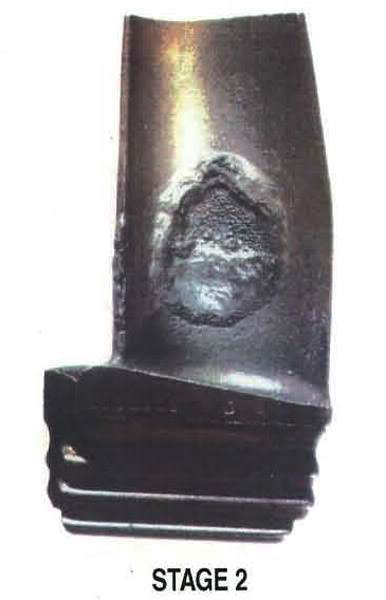
Stage 3
Severe sulphidation :
- Heavy roughness of the surface, Built-up of blister, Base material is attacked, Blade integrity is affected.
- Condition is NOT acceptable in the field.
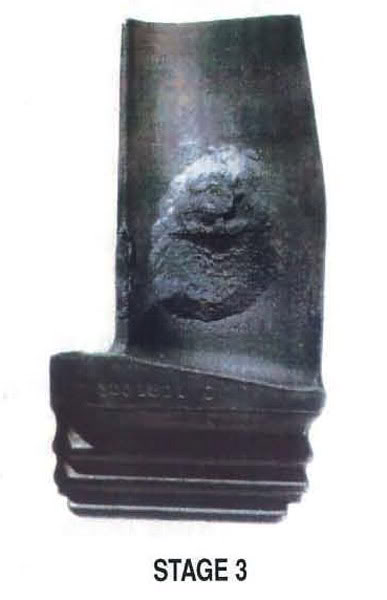
Stage 4
Deep penetration with metal separation:
- Blade fracture imminent. Unbalance of rotor assembly. .
- Continuous Operational is Unsafe & Endanger
